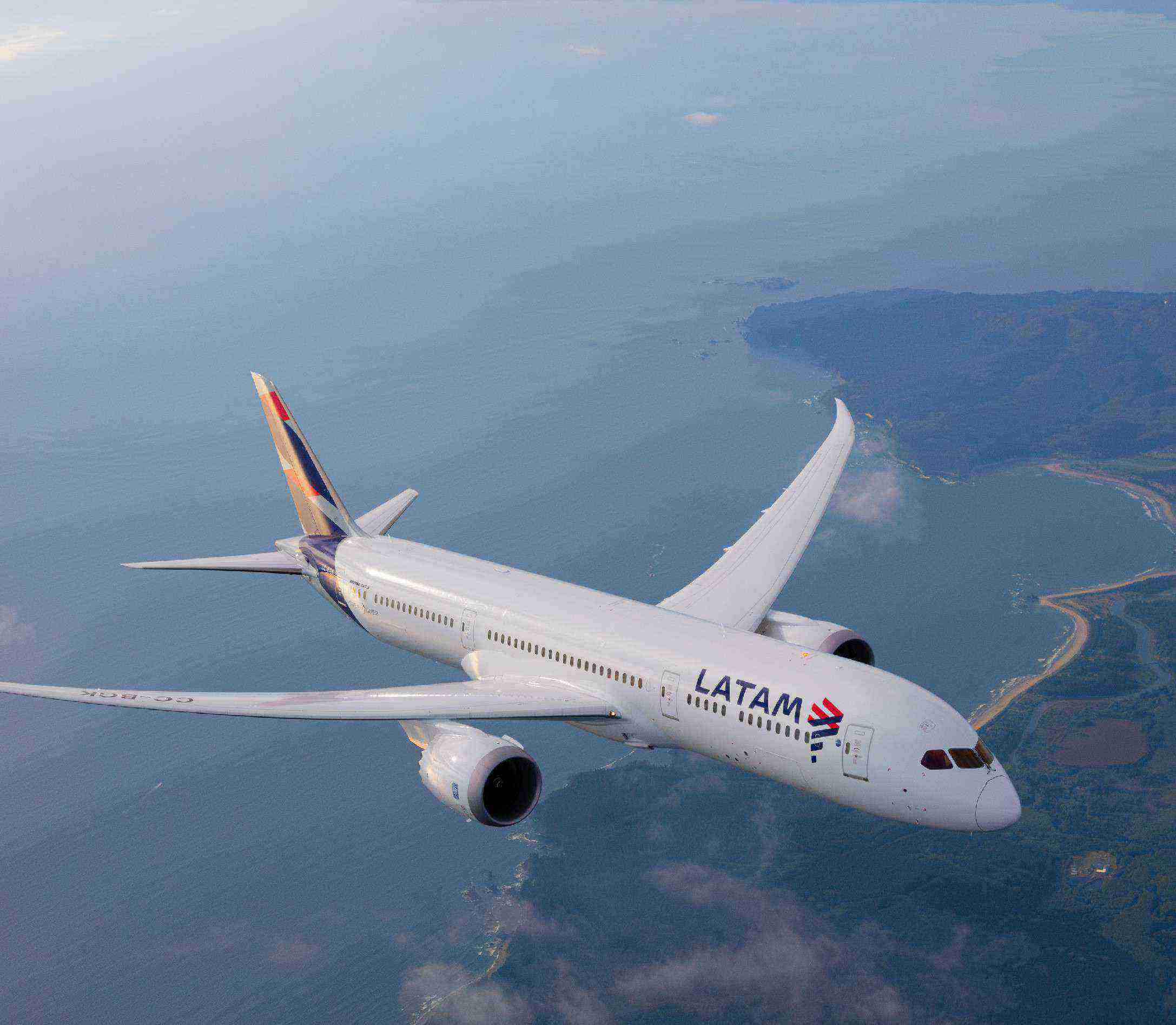Lima, AUGUST 16 2022Manager of LATAM Airlines: We create opportunities for connectivity, commerce, and economic well-being for Arequipa

The numbers smile upon the main airline in the country. After opening new destinations, it plans to operate approximately 1250 flights a day this month, a number which could increase in September due to the 50,000 visitors from different parts of the world expected to attend PERUMIN 35. Cristina Gil de Melo, sales manager of LATAM Airlines Peru, highlights corporate projections and their incursion against climate change.
What opportunities does PERUMIN 35 offer LATAM Airlines’s international brand?
PERUMIN is certainly one of the most important events in the mining industry in the country and, I would dare say, in the region. And being able to share experiences with other professionals in the industry, where innovation is an everyday thing, is always important.
We believe that the event also gives great visibility to the Arequipa region and, in that sense, our commitment to the country and to bringing the regions of the interior of Peru into focus gains new relevance.
What will be the company’s strategies within the framework of the mining convention?
Betting on the regions is a strategy we have been promoting for some time now in order to contribute to the country.
Our focus on sustainability is a horizon that combines perfectly with this desire of creating opportunities for the regions and their communities, and, in that sense, this opportunity is no exception because we believe that it is precisely through events like this, in which we can share with experts from other industries, that the whole LATAM team learns and can capitalize other good practices being implemented.
What is LATAM’s position in the aviation market in Peru and in Arequipa?
We are pleased to say that Arequipa is one of the regions to which we fly on a daily basis. We have flights from Monday through Friday, and that offers great opportunity of connectivity with the capital, but also of commerce and promotion of economic well-being for the region.
What are LATAM’s prospects of growth for this year?
We continue making progress in the recovery and reactivation of our operations, not just in Peru but also at a regional level.
The LATAM group is projecting a passenger operation of 81% for August, compared to the same period in 2019, a pre-pandemic scenario. Specifically in Peru, we have just resumed our Lima – Jaén route to provide connectivity to the Cajamarca region, with which we have a long-standing commitment within the framework of the promotion of its destination brand Marca Cajamarca. This has been flying the region’s skies for a few months already.
Furthermore, in this process of reactivation of routes, recently, in July, we have resumed a route that is emblematic for the operation and that opens new accesses to the regions, the Cuzco – Santiago de Chile route. We have also reactivated the routes Lima – San José de Costa Rica; Lima – Medellín; Lima – Porto Alegre, in Brazil; Lima – Medellín; and Lima – Cali, in Colombia.
In addition, we have opted for creating interregional bridges, thus reactivating the Juliaca – Cuzco route, which offers new commercial and domestic tourism opportunities to both regions.
With all this, how many additional flights do you project to operate by the end of August?
LATAM foresees to operate about 1249 daily domestic and international flights in August, connecting 135 destinations in 22 countries. As operation Peru, this reactivation of our operations satisfies us, as we are able to have 19 domestic and 26 international destinations.
How are you managing the impact of the increase in the number of flights on the environment?
When in May 2021 we decided to relaunch our sustainability strategy, one of our objectives—and, more than objectives, commitments to the countries where we operate—was to be able to reach carbon neutrality by 2050. In this sense, one of the pillars of said strategy became a priority: the attention to climate change.
It is precisely based on this strategic pillar that we designed a series of initiatives and programs that today are offering our customers opportunities to join this great crusade to make this a more sustainable planet.
What does the Vuelo Neutral program consist in and how is it adding to your customers?
One of these programs is precisely “Vuela Neutral”, a program developed along with the climate change solutions firm Choose. It gives LATAM’s corporate clients the option of compensating for the CO2 from their business flights. It is also a program in which, for each ton the corporate client offsets, we commit to match the offset, thus doubling the contribution to a selected project.
This program fits perfectly into our business strategy but becomes fundamental because it also adds to our goal of neutralizing 50% of our domestic emissions by 2030.
What are the projects that are being worked on under this program?
In the country, one of the projects this program enables us to support is the 'Nii Kaniti Community Forest Management', a sustainable forest management initiative by Indigenous communities of the Peruvian Amazon region. This initiative is developed in seven indigenous Shipibo-Conibo and Cacataibo communities settled around the Ucayali river, which manage an area of 119,837 hectares of tropical forest.
Nii Kaniti works towards six of the Sustainable Development Goals: climate action, life of terrestrial ecosystems, responsible consumption and production, decent work and economic growth, zero hunger, and end of poverty. The project is managed in partnership with the Association for Research and Integral Development (AIDER), with the aim of reducing global emissions significantly by protecting the ecosystem of the tropical forest and expanding sustainable community management.
The initiative addresses the local economic drivers of deforestation and forest degradation by supporting the development of socially inclusive companies, implementing the appropriate use of communal lands, and building capacities for natural resource management.







